#Vocational
Explore tagged Tumblr posts
Text

Workshop in the Ecole Boulle vocational school in Paris
French vintage postcard
#ecole boulle#tarjeta#school#postkaart#ecole#paris#sepia#historic#photo#postal#briefkaart#photography#vintage#ephemera#ansichtskarte#old#postcard#french#boulle#workshop#postkarte#vocational#carte postale
11 notes
·
View notes
Text
MY HOLISTIC WELLNESS ACTIVITY
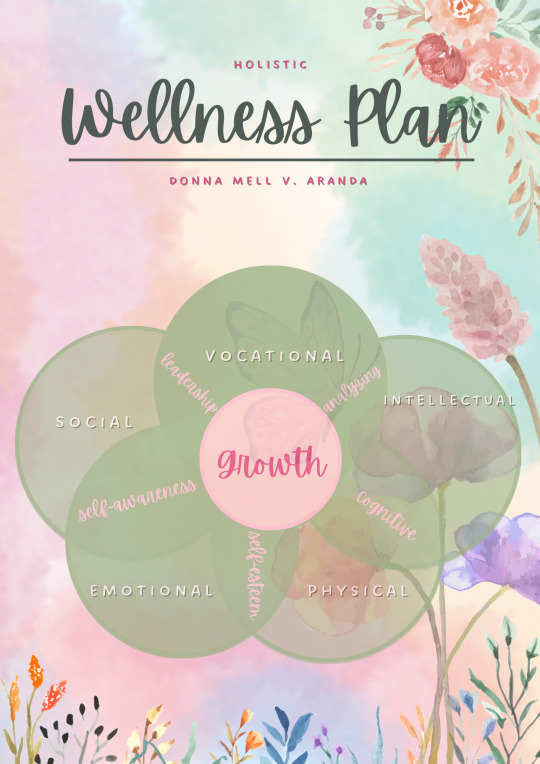
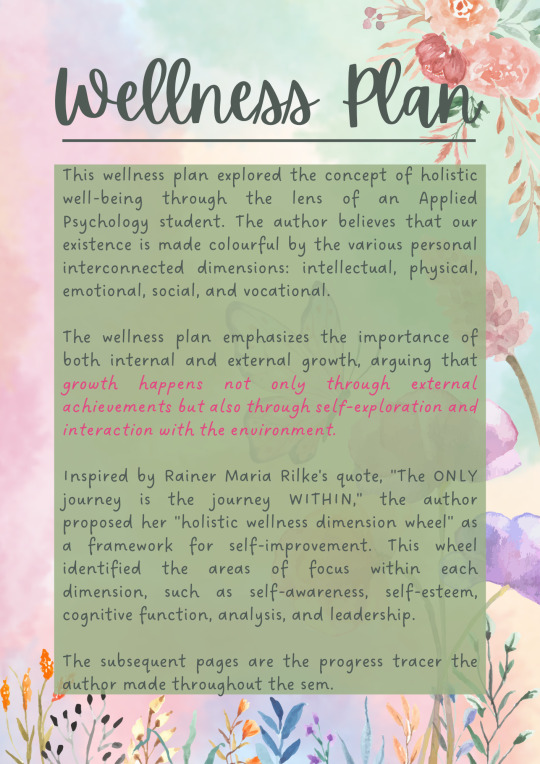
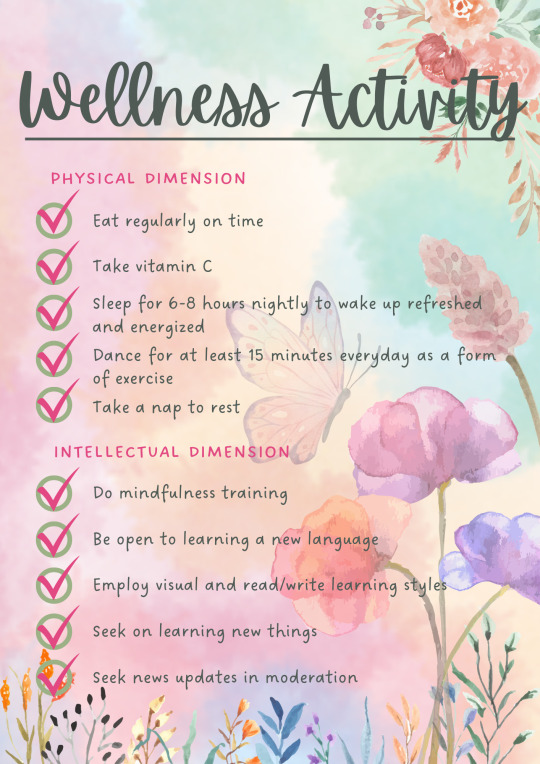
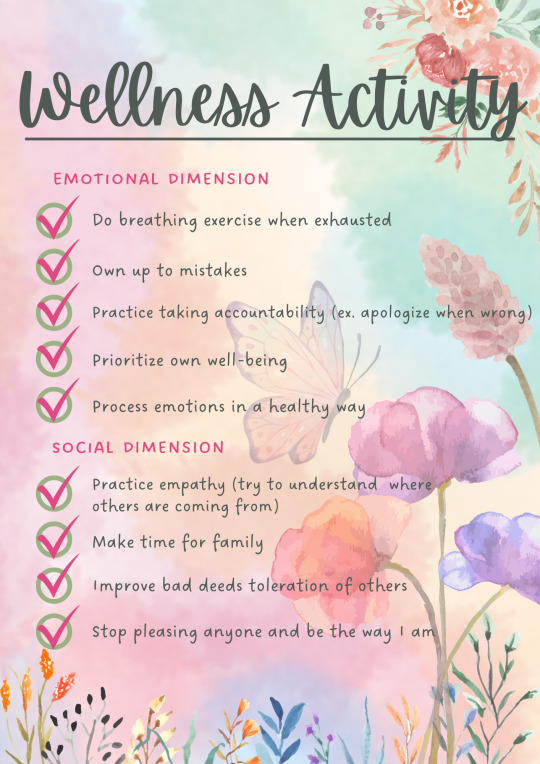

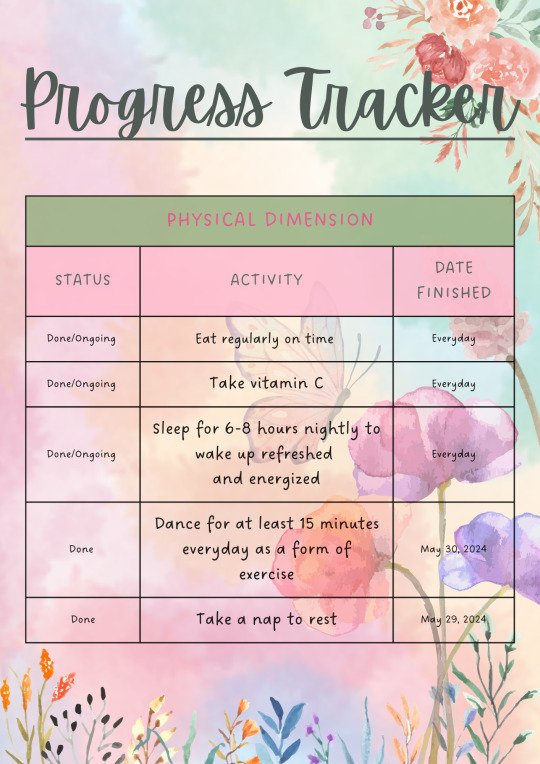
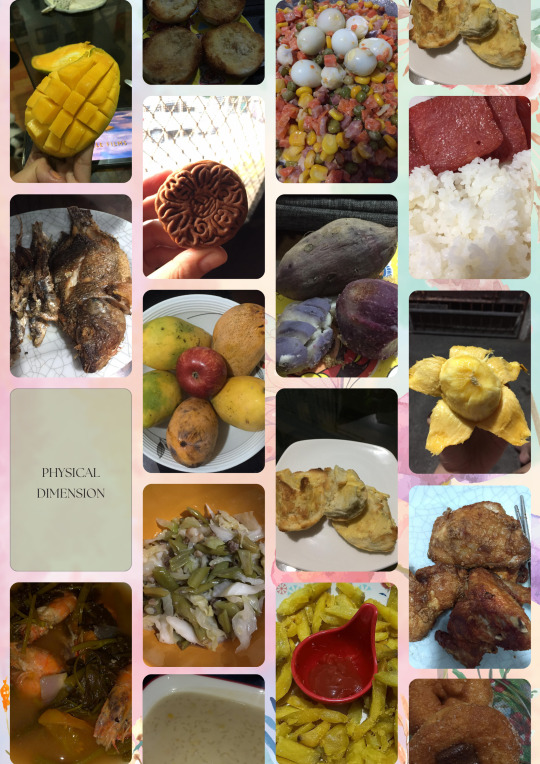

This semester, one which I truly aimed to focus on was improving my physical well-being through healthy habits. I set a goal to eat regularly and I managed to stick to it, most of the time, throughout the semester. I also aimed to take vitamin C daily, like Poten Cee, and I achieved that too. In terms of sleep, I aimed to get 6-8 hours nightly to wake up feeling refreshed and energized. I did well enough most of the time, as this semester, my goal was to choose myself, thus, I labelled it as a done and an ongoing habit. As for the nap, I strive to be more in control of it, as most of the time, my nap, even with the timer set on, continues to be a full-blown sleep.
For exercise, I set a goal to dance for at least 15 minutes every day, which I pretty much exceeded. Sometimes, I danced for hours! I managed to make this a habit, and recorded it as “done/ongoing” on the tracker, as well, as I am still planning to do this.
I am pleased with my overall success this semester in creating good habits to enhance my physical health. It appears that my main focus was on developing routines related to eating, taking vitamins, getting enough sleep, and exercising with dancing, which were lacking these past few semesters. My favorite parts? Cooking and documenting, probably!


I also made a real effort to focus on my intellectual growth. I wanted to challenge myself to learn new things, even with the very tight schedule we have in my whole academic endeavor. I set a goal to try mindfulness training, a DBT Training, actually, which was led by the esteemed APsy professors, and I was happy that I was able to complete that on May 9th, 2024. The training was every Monday, although sometimes it varied, due to some unforeseen circumstances. All in all, it was eight fruitful sessions.
I also wanted to be more open to learning a new language, which first started during our PSYCH 140 and continued until my PSYCH 147, and I continued thanks to this course requirement. As you can see in the gif, I was learning Practical Chinese owing to my huge interest in Chinese Drama! Another goal I had was to find ways to incorporate both visual and reading/writing learning styles into my studies. I found a way to do that by taking notes/lectures and designing them with my highlighters and pens. I occasionally write poems, too.
Finally, I challenged myself to actively seek out new learning opportunities, especially career-wise opportunities needed for our advocacy project, the DEPPortunity. I made a note to keep an eye out for interesting workshops or courses online. I also set a goal to stay informed about current events, but to make sure I wasn't spending too much time on it because I get too occupied and stressed by them, especially when it was about crimes. I would like to say that I figured out a way to stay updated in moderation.
Overall, I'm truly pleased with how much I was able to accomplish this semester in terms of intellectual growth. I truly made a real effort to step outside my comfort zone and learn new things, things I love and passionate about.


Of course, the highlight of this wellness wheel for me was the focus on developing healthy coping mechanisms for dealing with stress and difficult emotions, considering the emotional war shock I felt this year. As mentioned in my fourth e-journal, I set a goal to use breathing exercises when I felt overwhelmed, and most of the time, I do the 1-10 technique. At first, it was hard to employ what I learned in the DBT, like being mindful and doing breathing exercises, but as one of the professors said, practice improves us.
Another goal I had was to take responsibility for my mistakes, which actually related to my emotion control. If I know it is my fault, I will not argue; I will acknowledge the mistake and own up to it. I wanted to be more upfront about apologizing when I was wrong. My progress tracker shows how I consider this as an ongoing effort because it is, in fact, a continuous process, and I have been working on this every day, or at least every chance I get.
Prioritizing my well-being was another big goal for this semester because as I have said, I prioritize myself, my mental well-being, and my emotional state this semester. The tracker shows that this is still a work in progress, much like other continuous growth, but I am committed to making it a habit.
Finally, I wanted to find healthier ways to process my emotions. There were times that I diverted my heightened emotions into creativity and leisure activities. I wrote poems, drew, painted, watch series or movies, surf the net, scroll through TikTok, and even danced, and they really, really helped. At least, it made me forget my feelings for a while.
When it comes to emotional growth, I would say that I cultivate some coping mechanisms and make an effort to be more accountable for my actions. I will pretty much continue to focus on prioritizing my well-being and finding healthy ways to deal with difficult emotions, especially with my situation now.
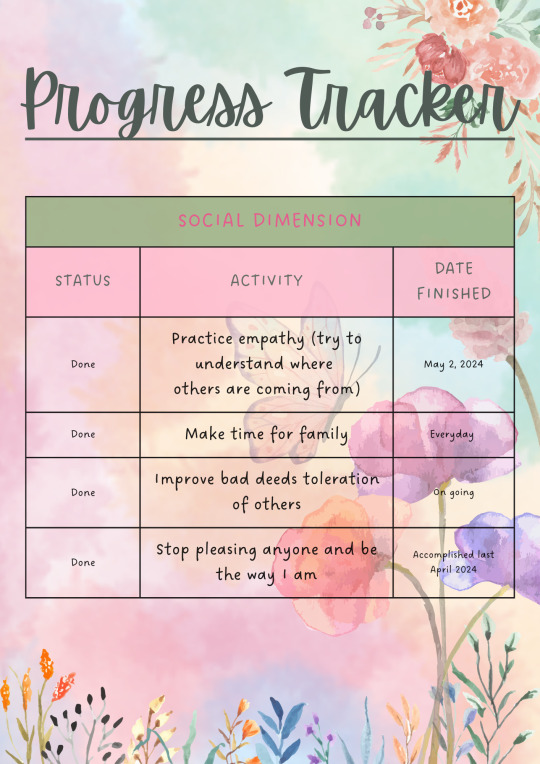


Strengthening my social connections and becoming more comfortable interacting with others in the social dimension was the thriving dimension during the first part of the semester. My friends and I got to bond every face-to-face. Hence, I set a goal to be more empathetic towards others and tried to understand where they are coming from.
Another goal I had was to spend more quality time with my family. When I was at home, I would bond with my family, it was not something I could just put a finished date on, I have been working on this every day. I made a conscious effort to put away my phone and be fully present during meals and family matters. Sometimes, my sister and I or my mother and I would go out the house and have our sponty gala.
One of the best parts of my cultivation of my social dimension is my bonding with my nephews, definitely worth the time!
I also wanted to improve my tolerance of others' shortcomings. I feel like, if I want to improve myself internally (emotional dimension), I should also improve the way I interact with people. The tracker shows that I worked on this throughout the semester and considered it accomplished in April. This involved learning to accept that people make mistakes and that everyone has flaws, which is okay. I need to be kind and compassionate. I focused on forgiveness and understanding, rather than getting frustrated or upset about something I do not have any control of. For I can not control what is happening to me, but I can control how I approach that challenge.
One of the most important aspects of my growth socially is not having a large number of friends, but having quality ones. So, during the semester, I aimed to stop people-pleasing and focus on being myself. This was a somewhat challenge for me, but I started by identifying situations where I found myself people-pleasing. Once I was aware of these situations, I could start to assert myself more and say no when I needed to. I also focused on surrounding myself with people who appreciated me for who I am. I will continue to focus on building strong social connections and being comfortable being myself around others.


As a student with a current headship position in an organization, tracking my progress in this area through the wellness wheel was a valuable experience. This semester seemed to fly by overall, but some months definitely felt slower! Looking back at my vocational goals, I'm proud to say I fulfilled my responsibilities. Leading the member relations activity with our alumni was a highlight of the semester. I spearheaded the organization's first Acquaintance Party since the pandemic, which was a great success.
Not only did I focus on one organization, but with my other affiliation, too. In fact, I volunteered on many committees for the program organization during the week of celebration. Most of my role was about programs, which cultivated my skills in flow preparation, and more of behind the scene tasks of the event.
Nevertheless, I do acknowledge that my mindset continues to be my greatest challenge or nemesis of mine. I started working on developing a more positive attitude and letting go of those limiting beliefs back, which I will keep working on. All in all, I think this semester I really made some progress toward being more involved and developing professionally, which prepares me for my possible related career in the future.

youtube
2 notes
·
View notes
Text

The Benefits of UK Free Vocational Courses Are you a motivated individual looking to take the next step in your education and career? If so, ... https://www.meoun.uk/the-benefits-of-uk-free-vocational-courses/?feed_id=115517&_unique_id=668ff021b643c
0 notes
Text
Find TVET Lab Equipment Manufacturer and Supplier In India
Buy high quality TVET lab equipment from leading Technical vocational educational lab equipment manufacturer, supplier and exporter In India. We offer competitive prices, customer support. Feel free to contact us to get quote.

0 notes
Text
youtube
Certificate III in Sport Coaching - Completing this qualification could lead to a variety of entry-level opportunities such as:
Community coach
Fitness centre attendant
Recreation attendant
Sports equipment
Retail worker
Sports event staff
Sports facility receptionist
Volunteer (unpaid)
You may be eligible for VET in Schools Funding. Get to know more - visit our website at https://blueprintcd.com.au/course/sports-coaching/certificate-iii-sport-coaching
0 notes
Text
Crafting Success: The Impact of Vocational Education & Training on Career Development
In today's rapidly changing job market, vocational education, and training (VET) has emerged as a critical path to success for those looking to improve their skills and advance their careers. Unlike traditional academic routes, vocational education and training focuses on providing practical, direct training that is immediately applicable in the workplace. This article investigates the profound impact of vocational education and training on career development and how it can assist individuals in pursuing successful and fulfilling careers.
One of the primary advantages of vocational education and training is its ability to provide individuals with the skills and knowledge required for success in their chosen field. Whether it's learning the intricacies of trade, mastering technical skills, or developing expertise in a specialised area, vocational education, and training lay a solid foundation for career advancement. By focusing on practical, industry-relevant training, vocational education and training ensures that graduates are well-prepared to meet the demands of today's workplace.
Another benefit of vocational education and training is its versatility and accessibility. Unlike traditional academic programmes, which often require a critical time commitment, vocational education, and training provide assorted options to accommodate individuals with varying needs and schedules. Whether you are a recent high school graduate looking to enter the workforce, a working professional seeking to upskill, or a person looking to change careers, vocational education, and training offers a flexible path to education that can meet your needs.
Vocational education and training are also important in meeting the changing needs of industries. By collaborating closely with employers and industry experts, vocational education and training providers ensure that their qualifications are current and applicable. This close collaboration helps to bridge the gap between the skills employers require and the skills workers already have, ensuring that graduates are well-prepared to meet the demands of the job market.
Furthermore, vocational education and training credentials are highly valued by employers. Employers understand the practical nature of vocational education and training programmes and value the skills and expertise that graduates bring to the workplace. Whether you want to start your own business, advance in your current career, or enter a completely new field, a vocational education and training qualification can lead to a variety of exciting career opportunities.
Vocational education and training (VET) entail more than just learning new skills; it also enables people to take control of their future. One of the key features of VET is its emphasis on practical, direct learning. This approach allows students to learn valuable skills that they can immediately apply in the workplace. Whether you are learning to weld, operate machinery, or provide healthcare services, vocational education, and training allow you to put your skills to the test in a real-world setting, ensuring that you are prepared for the challenges of your chosen profession.
In conclusion, vocational education and training are critical in developing successful careers. Vocational education and training provide practical, direct training that equips individuals with the skills and knowledge required to succeed in today's competitive job market. Whether you are new to the workforce or looking to advance your career, vocational education and training can lead to rewarding and fulfilling success.Top of Form
0 notes
Text
Admission Open 2024-2025 | Arthashastra School For The Neurodiverse(Special child) offering Special Education in chennai.
Contact:
call: 9940735855
Gmail: [email protected]
#special education#education#school#admission#admission open 2024 2025#pre-primary#nios#vocational#iep#special school#in chennai#chennai#uthandi
0 notes
Text

Our approach
Children are the focal point of everything we do. CHILDHOPE-ZAMBIA is a child development organization in Zambia. We work with children, their families, women, youths, communities, organizations and the government of Zambia to bring about positive development and reduce poverty among the children. CHILDHOPE-ZAMBIA provides opportunities for these groups to participate at different levels based on their strengths and life experiences. Families and community representatives also participate as advisers and/or decision makers. CHILDHOPE-ZAMBIA believes that when children, adults and communities work together it is most likely that programmes will be booming and there will be sustainability. Listening to what children say about their rights, needs and concerns is key to our approach. CHILDHOPE-ZAMBIA encourages and helps children to take an active role in finding solutions to their problems and realizing their full potential towards their development.

Accountability Our organization is committed to making lasting improvements to the lives of children living in poverty in Zambia. CHILDHOPE-ZAMBIA recognizes its duty to be as effective and efficient as possible and to be accountable to all its stakeholders. Our core areas of activity include:
Education (Early childhood and Primary)
Girl child empowerment
Health and HIV/AIDS
Income generating activities
Nutrition
Provision of clean water and sanitation.
Inclusive education
Child sponsorship
Child, youth and women empowerment
Sexual and reproductive health

Our values Our mission We create the conditions in our work, activities and in our organization for personal empowerment, especially of children and the most marginalized. CHILDHOPE-ZAMBIA will always act in the best interests of the child and respect child and human rights. We are ethical, honest, transparent, and place a high value on integrity. CHILDHOPE-ZAMBIA acknowledges that it cannot solve problems of poverty alone but only through team work and mutual partnerships and we are accountable to all of our stakeholders in our communication, finances, performance measures, and results and strive for effectiveness, sustainability, and efficiency in everything we do

#YOUTH#WOMEN#vulnerable#Volunteers#vocational#village#underprivaledged#training#support#Southern Africa#sick children#rural areas#r#Projects#Programmes#programme#pre-school#povertyi#orphans#Nutrition#nON-profit making#NGO#ncome generating activities#mothers#mental health#Meals#infrustracture#hunger#hospital#HIV/AIDS
0 notes
Text
Intermediate vocational bridge course previous Question papers
IVC CSE AP DocScanner 22-Nov-2023 10-40 amDownload DocScanner 22-Nov-2023 10-50 amDownload DocScanner 10-Oct-2023 11-02 amDownload DocScanner 22-Nov-2023 10-47 amDownload

View On WordPress
0 notes
Text
The primary reason your equipment has to be from the top vocational training lab equipment manufacturers are their deep understanding of the growing spectrum of the vocational market.
0 notes
Text

Courtyard of the Auteuil Vocational School in Paris
French vintage postcard
#vintage#tarjeta#briefkaart#postcard#photography#auteuil#postal#school#carte postale#sepia#ephemera#historic#paris#french#ansichtskarte#vocational#postkarte#the auteuil vocational school#courtyard#postkaart#photo
2 notes
·
View notes
Text
Mumtaz ! Garment Making Vocational Education School
Mumtaz grew up in a rural village in Ajmer, where her family struggled to make ends meet. Her parents were farmers, and they worked hard to provide for their family, but their income was never enough to cover all their expenses. Mumtaz had a passion for sewing and making clothes. She often helped her mother with sewing clothes for their family, but she had never received any formal training in…

View On WordPress
0 notes
Text
What is a Trade School
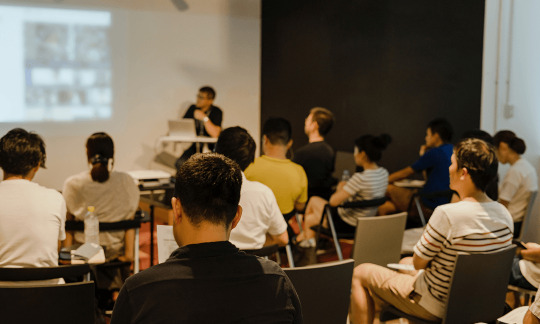
A trade school is a post-secondary educational institution. It provides hands-on training for specific work. Trade schools designed trade programs to teach students technical skills. These trade programs prepare them for actual work in their chosen field.
Trade school programs have the shortest programs compared to other post-secondary educational programs. Trade school programs focus only on relevant job training, unlike universities. Depending on the program, students can get their degrees within six months to two years.
Students who finish their chosen program will receive the relevant industry certification. They may also enter into the workforce immediately after graduation most of the time. Others may have to study further for a licensure exam. Some of the occupations that may need a license are CNA and CDL.
You may enroll in trade schools if you are interested in becoming a:
Certified Nursing Assistant
Medical Assistant
Licensed Commercial Truck Driver
Plumber
IT Technician
Automotive Technician
HVAC Technician
Electrician
Hair Stylist
Cosmetologist
And a lot more!
How long is trade school?
Your time in trade school depends on the program and school you choose. You can complete trade programs in six months; others may take over a year or two. Other factors could be student progress, program complexity, and school schedule.
Here are some of the most common trade programs and their respective duration:
Skilled Trades
HVAC Technician program – Earning an HVAC certificate may require 6 months to 2 years above. This time includes classroom time, field training, internship, and apprenticeship.
Aircraft Technician and Mechanic Program – Becoming an Aircraft Technician and Mechanic generally requires 18 to 24 months. It may include an apprenticeship.
Commercial Diver Certification Program – CDL training takes 1 month to 3 months to complete. It is generally one of the shortest of all trade schools.
Plumbing Program – Plumbing training takes around 2 years to complete. Apprenticeship, in contrast, takes 5 years.
Welding Program – Welding trade school program usually takes 7 months to a year to complete.
Automotive Technician and Mechanic Program – Automotive Technician and Mechanic training takes 9 months to 24 months to complete.
Healthcare
Nursing Assistant Training Program – Nursing Assistant programs take 3 weeks to 6 months to complete. Length varies depending on state requirements.
Medical Assistant Program – Medical Assistant training program length varies from months to a year. An associate degree in medical assisting usually takes 2 years to finish.
Dental Assistant Program – Dental Assistant program takes 9 months to 2 years to complete. Length varies depending on the school and the type of program you choose.
Personal Care
Cosmetology Program – Cosmetology program length varies from 12 months to 20 months. It may take longer if you account for apprenticeship and internship.
Barbering Program – Barbering program takes about 10 months to complete. An apprenticeship may take 2 to 3 years.
Massage Therapy Program – Massage Therapy programs can last from weeks to years. The length depends on the program structure.
Computer and Technology
AWS Program – It generally requires 80 to 120 hours of study to earn your AWS certification. The required hours will translate to 2 to 3 months.
Web Development Training Program – Web Development training can dramatically range from months to years. The length depends on the structure of the program you choose.
How much does trade school cost?
Trade school program costs vary depending on the program, the school, and the location. Tuition is one of many things to keep in mind. Books, supplies, and your living expenses are factors to consider.
Tuition
Tuition costs differ, too, depending on the type of trade school offering the programs. Trade schools can be public, private not-for-profit, and private for-profit. Students complete their trade programs for two years or less generally.
Here is the tuition comparison depending on the type of institution based on U.S. Department of Education's College Affordability and Transparency List for the years 2020 – 2021:
2-year, public – $3,863
2-year, private not-for-profit – $15,549
2-year, private for-profit – $15,033
Less than 2-year, public – $8,683
Less than 2-year, private not-for-profit – $13,127
Less than 2-year, private for-profit – $15,636
Books and Supplies
Other expenses to consider are books and supplies. Some schools and programs include books and supplies in tuition fees, while others do not. These costs vary depending on the programs, the schools, and locations.
The average cost for books and supplies is $1,460 for 2022-2023 as estimated by College Board.
Other Expenses
Living expenses are another thing to account for. Living with family members while studying may reduce your rental and food costs. In contrast, those who live independently may need to set more budget for rental and food expenses.
The overall estimated cost of trade school, inclusive of tuition fees, books and supplies, boarding, and other expenses, according to the National Center for Education Statistics:
2-year, public, on campus: $15,900
2-year, public, off campus, living with family: $9,700
2-year, public, off campus, not living with family: $19,600
2-year, private nonprofit, on campus: $33,300
2-year, private nonprofit, off campus, living with family: $23,700
2-year, private nonprofit, off campus, not living with family: $33,100
2-year, private for-profit, on campus: $27,200
2-year, private for-profit, off campus, living with family: $21,400
2-year, private for-profit, off campus, not living with family: $30,700
Benefits of trade school
If you are still thinking about whether trade school is for you or not, these benefits of enrolling in trade school might help you decide:
Lower Costs
Faster Timeline
Smaller Class Size
Hands-on Training
Job Assistance
Financial Aid
What now
Here are the general steps if you are considering enrolling in trade school:
Choose a trade school. Programs in trade schools are highly-specialized and specific. You must be sure of what program and industry you want.
Look for a trade school. You can use our trade school directory to look for schools. You can search based on your location or chosen program. You can also ask for help from our partner – Dreambound.
Get help from a trusted partner. Once you decide you do not want to do it alone, you can seek help from Dreambound. They make sure to connect you to the right school.
Source: https://www.tradeschoolsnearme.co/
#tradeschools#trade schools#trade programs#trade school programs#trade courses#education#vocational#vocational training#vocationaleducation#vocational schoola#trade schools in michigan#trade schools in arizona#trade schools near me
0 notes
Text
Top vocational programs
The dedication of Smiley Education to offering a top-notch education is one of the main factors in its success in assisting students in getting accepted into vocational courses. The institute works with instructors who are highly skilled and experienced and who are committed to teaching students the most recent methods and cutting-edge procedures in their field. By doing this, teachers can make sure that students get a thorough education that covers all aspects of the program they have chosen, including theory, practical skills, and hands-on experience.
0 notes
Text
youtube
Certificate II in Hospitality - This course is designed for people interested in becoming a:
Bar attendant
Cafe attendant
Catering assistant
Food and beverage attendant
Customer service assistant
You may be eligible for VET in Schools Funding. Get to know more - visit our website at https://www.blueprintcd.com.au/course/hospitality/certificate-ii-hospitality
1 note
·
View note
Text
30 Powerful Ideas to Supercharge Literacy and Numeracy in Vocational Training
30 Powerful Ideas to Supercharge Literacy and Numeracy in Vocational Training
Breathing new life into your embedded literacy and numeracy in vocational and trades training If you’ve begun embedding literacy and numeracy into your vocational or trades training course, whether through professional development or on your own, you may be wondering what to do next to reinvigorate this approach. Below are a few suggestions. Choose one or two and talk about them with a…

View On WordPress
0 notes